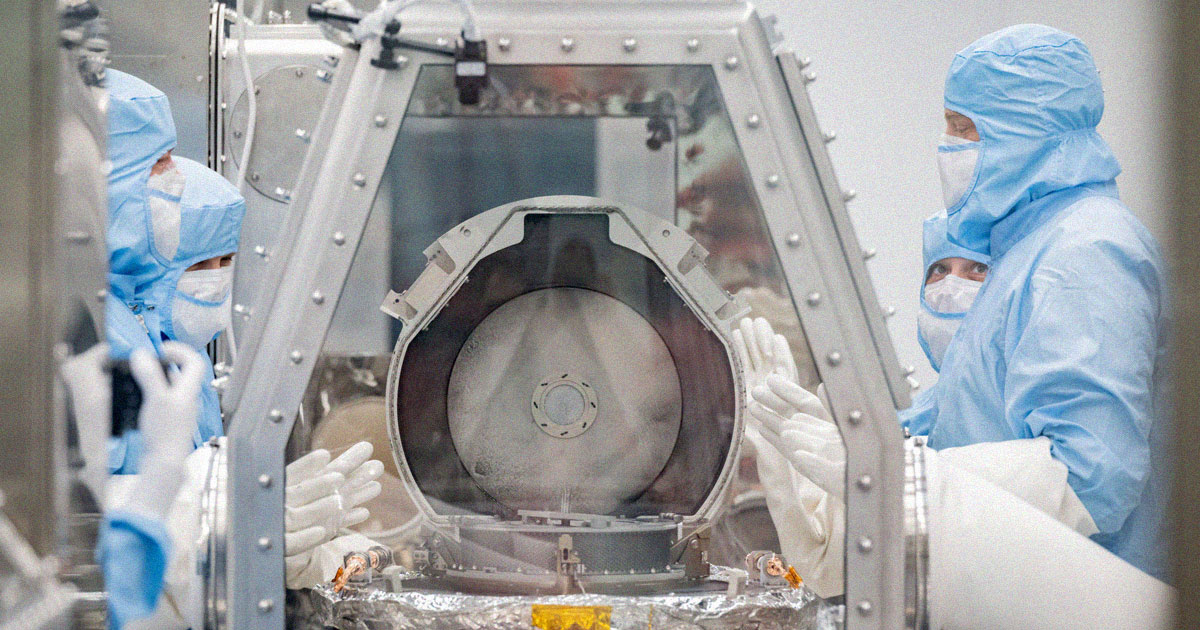NASA Successfully Unlocks Stuck Lid On Asteroid Bennu Sample Container
NASA successfully unlocks stuck lid on asteroid Bennu sample container. In a significant development, more than three months after OSIRIS-REx's return to Earth, scientists have successfully accessed the capsule containing the asteroid Bennu sample material.
Author:Rhyley CarneyReviewer:Paula M. GrahamJan 14, 202412.7K Shares176.8K Views

NASA successfully unlocks stuck lid on asteroid Bennu sample container. In a significant development, more than three months after OSIRIS-REx's return to Earth, scientists have successfully accessed the capsule containing the asteroid Bennu sample material. The opening process posed challenges due to the capsule's specially designed, sterile environment, which restricted the use of certain tools.
Eileen Stansbery, a division commander at the Johnson Space Center, expressed gratitude for the perseverance of engineers and scientists who overcame difficulties and created inventive instruments to overcome this challenging obstacle.
As a result of the fact that the bolts that secured the lid were difficult to detach using normal tools, the specialists at the Johnson Space Center in Houston spent several weeks developing new multi-part tools that were specifically designed for this purpose. The Touch-and-Go Sample Acquisition Mechanism (TAGSAM) head is currently being disassembled to reveal the remaining pebbles and dust that were brought back by the asteroid sample return mission which was conducted by NASA.
To prevent the sample from becoming contaminated, the TAGSAM is contained within a glovebox that is specifically designed for that purpose, and only certain instruments are authorized for usage. Because none of the tools that were already available were successful in removing the stubborn fasteners from the TAGSAM head, the team was forced to come up with an original set of tools.
"The innovation and dedication of this team has been remarkable. We are all excited to see the remaining treasure OSIRIS-REx holds."
Meanwhile, Dr. Nicole Lunning, OSIRIS-REx curator at Johnson, remarked, "In addition to the design challenge of being limited to curation-approved materials to protect the scientific value of the asteroid sample, these new tools also needed to function within the tightly confined space of the glovebox, limiting their height, weight, and potential arc movement."
"The curation team showed impressive resilience and did incredible work to get these stubborn fasteners off the TAGSAM head so we can continue disassembly. We are overjoyed with the success."
Following an urgent warning from scientists, concerns have been raised that NASA's current plans could potentially 'destroy' the Moon. Astronomers are apprehensive about the unregulated push to exploit the Moon, fearing irreversible damage to critical scientific sites, including craters.
Conclusion
Professor Richard Green, an astronomer from the University of Arizona, clarified, "We are not trying to block the building of lunar bases. However, there are only a handful of promising sites there and some of these are incredibly precious scientifically. "We need to be very, very careful where we build our mines and bases."
Jump to

Rhyley Carney
Author

Paula M. Graham
Reviewer
Latest Articles
Popular Articles